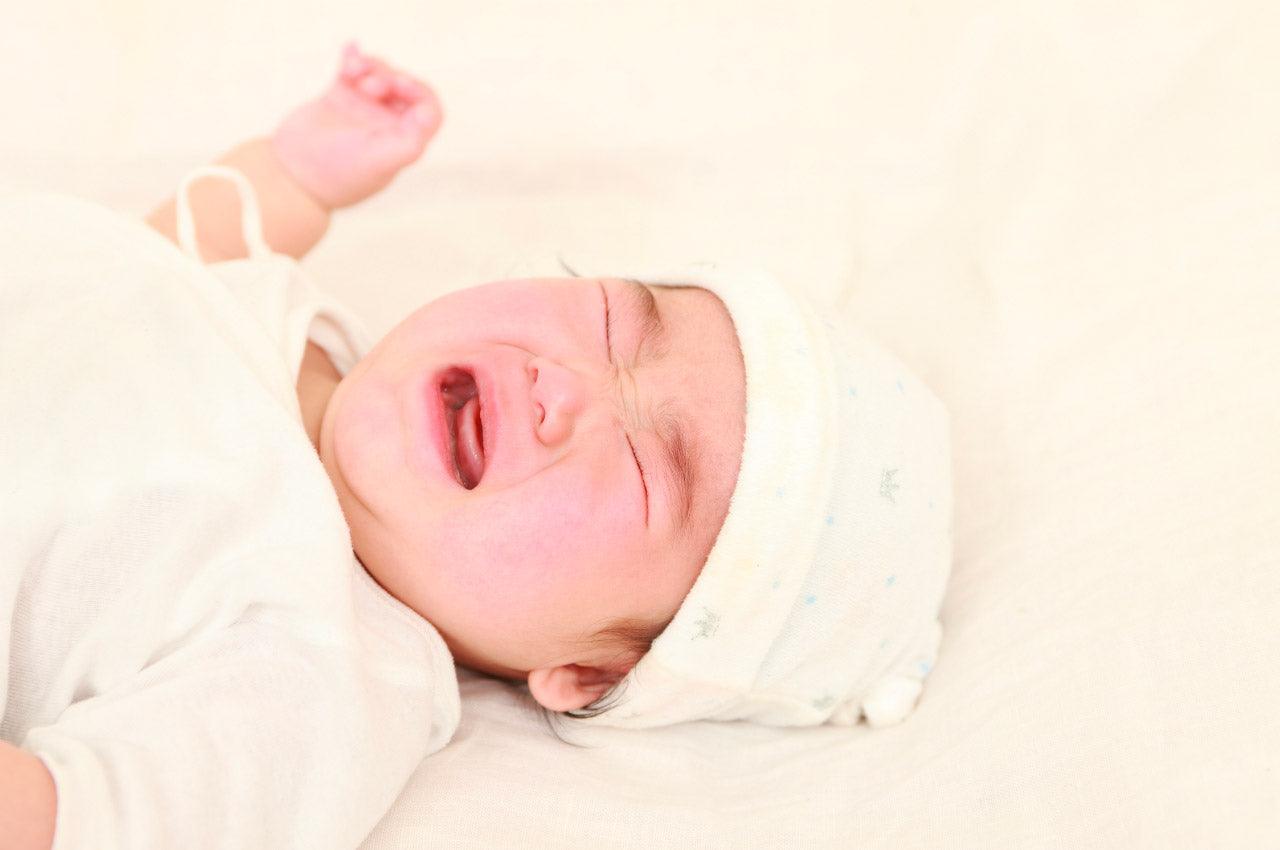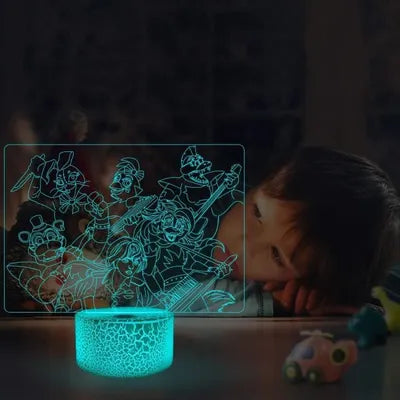This week we continue our two-part series on nightmares and night terrors in your toddler or preschooler. Last time, we took a close look at nightmares, how they occur, what causes them, and how we as parents can help our children overcome them.
This week, we're going to take a look at night terrors . Night terrors differ from nightmares in that they are much less frequent and much more terrifying. They also tend to last longer than nightmares. As a parent, it's important to be able to identify night terrors and know how to help your child overcome them.
In today's article, we'll explore what night terrors are , the ages they typically start and stop, and why children get them. We'll also give you some helpful tips for dealing with a toddler's night terrors.
When and why do night terrors occur?
Night terrors are quite common in young children, affecting around 3-6% of them. Although they can be disturbing, there is usually no cause for alarm. In fact, night terrors usually go away on their own as children get older.
But what are night terrors and what causes them?
Night terrors, as their name suggests, occur during the night. They are very different from nightmares , which occur during REM sleep. Nightmares typically cause feelings of fear or dread, while night terrors are more characterized by feelings of confusion and restlessness . Children who suffer from night terrors may cry or howl in their sleep, thrash or even roll out of bed.
Sleep is a process that each of us goes through every night. For babies, this is a transition into the deepest sleep of the night. This takes about 30 minutes from bedtime, as they enter deep sleep faster than adults. The first sleep cycle lasts about 60-90 minutes, and your baby (and you) will wake up briefly when he transitions into the second sleep cycle.
It is also a deep sleep, and it is during the first hours of sleep that babies are supposed to find their deepest sleep. Sometimes this process is not as smooth and quick, which is why your baby sometimes wakes up crying. However, this awakening is usually brief and you go back to sleep immediately. It is normal to wake up briefly.
Night terrors usually occur during the transition phase from deep sleep to light sleep , when your child is semi-conscious. This experience can be very frightening for both you and your child.
According to some researchers, what happens is that part of your mind is trying to go back to sleep and part of your mind is trying to wake up, and both are trying to win. This is when night terrors can occur.
What are night terrors? And how are they different from "confounding events"?
Night terrors and confounding events are two sides of the same coin. They both occur during the first hours of sleep, when the child transitions from deep sleep to light sleep. Night terrors are not common, but confounding events are much more so.
Episodes of confusion can be mild , such as your child mumbling or moaning, rolling over for a while, then falling back to sleep. But they can also be very intense, with your child seeming confused and out of control.
If the event is a bit more intense, your toddler can sleepwalk. Did you know that one in twenty children sleepwalks? Sleepwalking is a phenomenon that occurs when a person is in a state of deep sleep. The brain is then still active and the person can perform activities such as walking or talking. Most sleepwalking children do not remember the experience afterwards.
However, for some children the event may be more pronounced, such as jumping out of bed and moving around the room. These children may look confused or upset and not recognize people they know. It can be very difficult to wake them up or comfort them. If your child sleepwalks, don't worry, it's completely normal!
People sometimes experience brief episodes of confusion (about a minute) , but these episodes can sometimes last up to 40 minutes. Night terrors are a very intense type of confusing event, and during one a person may look terrified and even be violent. Most night terrors only last between 1 and 5 minutes.
What causes episodes of confusion and night terrors?
Confusional episodes and night terrors can be caused by a variety of factors, including lack of sleep and stress. However, it is important to remember that these episodes are normal and are simply part of how we sleep as humans. Partial awakenings and episodes of confusion are normal and occur from birth. Confusion arises when your body's sleep drive meets your body's wake drive.
For example, you are sleeping and you hear the baby cry. You get up, go to his room and start feeding him before you are fully awake. You may not even remember how you entered the room. Part of your mind was awake and part was asleep. If you're confused, you can go to the bathroom instead of the baby's room and wonder what you're doing until you hear the baby cry and your brain finally starts to wake up.
From birth, there will be times during sleep transitions when your baby's will to sleep will be challenged by his or her will to wake up, and your baby may cry or fuss between sleep cycles. That's why it's important not to interrupt your baby's sleep cycle if you can help it. It is better that the desire to sleep prevails.
If your child's confounding events are mild and irregular, there is no need to worry. On the other hand, if they are intense or frequent, it is important to determine the cause and treat it (if possible).
No one can say for sure what causes confounding events and night terrors in some children and not in others, but experts agree that the following factors definitely contribute:
Excess fatigue
Children who are constantly tired are more likely to have frightening dreams or suffer from night terrors. This problem can be very serious, as it can affect their ability to develop during the day. It is important to ensure that children get enough rest so that they stay healthy.
Disruption of sleep schedules and routines
If your toddler or preschooler's bedtime and sleep schedules have been disrupted for several consecutive days, they are more likely to experience an episode of confusion or night terror. Indeed, the absence of routine can lead to a state of confusion and disorientation in young children. To help prevent night terrors, try to keep your child's bedtime and sleep schedule as consistent as possible.
heredity
If you have a family history of night terrors or confounding events, your child is more likely to suffer from them as well. It may surprise some parents, but the tendency to suffer from these sleep disorders is actually genetic. So if other members of your family have experienced it, don't worry if your toddler or preschooler does the same. There is no real cure for night terrors, but with patience and understanding they can usually be managed.
Sleeping troubles
Did you know that children with other sleep disorders, such as sleep apnea and restless leg syndrome, are more likely to suffer from confounding events and night terrors? And that's not all. The good news is that there are treatments for these disorders. If your child has any of these problems, ask your doctor for the help they need.
Bladder awareness
It is possible that your child's bladder is the cause of his episodes of confusion. There is anecdotal evidence linking a full bladder to episodes of confusion, but there is no hard evidence to support it. Still, it's worth trying to see if reducing your child's fluid intake before bedtime helps reduce episodes of confusion.
How to manage episodes of confusion and night terrors?
Episodes of confusion and night terrors can be unsettling for parents. However, there is nothing parents can do to stop these episodes once they start, but the following tips can help you overcome them:
Don't touch your child
Many parents find it difficult not to touch their child when they are having a night terror or having a confusional episode. However, researchers have found that holding, hugging and rocking your child usually does not improve the situation. In fact, it can even make it worse. Many parents have found that lying next to their child is a more effective way to provide comfort without touching them. This way you are always close to him and can offer him some support.
Do not try to wake your child or force him to wake up.
Again, this is a perfectly normal instinct. But yelling or shaking your child to wake him up can scare him even more and make his night terror worse. Instead, try turning on a dim light and speaking or singing quietly. This can gently and gradually wake your little one up and provide some comfort.
Dress your child in light clothes for bedtime
Dressing your child lightly for bedtime is a great way to help keep them cool and comfortable. This will prevent him from having night terrors or confused thoughts while sleeping. Make sure he sleeps under light blankets so he doesn't get too hot.
Try waking your child a few hours after bedtime
If you have trouble getting your child to stay in bed at night, try waking him up a few hours after he falls asleep. Wake him up around the time your child would normally have a night terror. Make sure he is awake, ask him to sit down, or get up and walk around; offer him a small drink. Then put him back to bed. Some parents report that it really works; it resets the child's sleep clock, in a way, and prevents night terrors from occurring.
Make sure your child gets the sleep they need
Making sure your child gets enough sleep is one of the best ways to prevent nightmares and night terrors. Toddlers and preschoolers need 11 to 13 hours of sleep a day, so be sure to give them plenty of restful sleep. Develop good bedtime habits, such as doing soothing activities before bedtime, and avoid leaving your child too tired. This will help your child get enough sleep and be less likely to have difficult dreams.
Have you dealt with night terrors and confusing events? What was your experience? What did you learn and what advice can you give to other parents going through the same thing?









